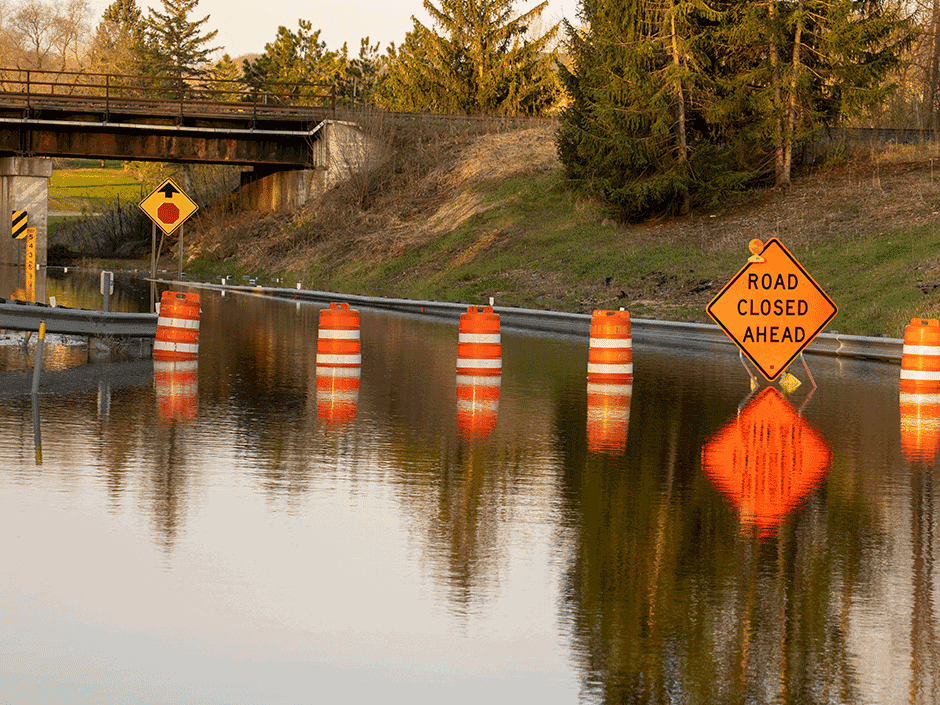Disaster Planning and Recovery for Churches: How to Prepare for an Emergency

Disaster preparedness should be a crucial part of every church’s facility management plan. By prioritizing disaster planning and recovery now, your congregation won’t be caught off guard when a catastrophe hits.
Emergency preparedness doesn’t mean your church body isn’t trusting God to meet its needs during times of crisis. Instead, disaster readiness is a form of stewardship, ensuring that adequate resources are in place to care for your valuable ministry, church members and property. Disaster planning and recovery for churches also allows continuity of worship and other essential ministries and services that your faith community provides.
Disaster readiness covers a wide range of areas. Natural disasters usually come to mind first, with flooding, earthquakes, tornados and hurricanes causing extensive damage to communities every year. But a variety of property concerns can impact your church, from frozen pipes, lightning strikes and fire, to downed trees and leaking roofs.
Unfortunately, the list of disasters that can hit houses of worship also includes human-caused public safety concerns such as arson, vandalism, active shooters or intruders. See the post “Church Security in a Dangerous World” for more information about child protection, background checks and church security training.
Having a disaster plan in place goes beyond keeping your church’s insurance agent on speed dial. Disaster response includes short-term and long-term contingency plans to minimize interruptions to your faith-based organization and church members. With some disaster preparation know-how and lots of resilience and faith, your united church family can bounce back while shining the light of Jesus Christ in your neighborhood.
4 Tips for Disaster Planning and Recovery for Churches
Your denomination or church headquarters likely offers a disaster ministry handbook, response manual or even a conference on the topic. These are valuable resources to help your church prepare for the moment disaster strikes — and the weeks and months that follow.
Experts recommend several best practices for local churches. Follow these big-picture recommendations so your church is ready in case of emergency:
1. Know your church’s insurance coverage inside and out.
Finding affordable property coverage is a challenge for local churches, making the risk-management field seem riskier than ever. Premiums and deductibles are skyrocketing, fewer insurance companies now serve the church market, and construction costs continue to increase. So, it’s vital to have a trusted insurance agent or broker who can steer your church leaders and decision-makers in the right direction. Seek recommendations from other local churches and community organizations about where to receive the most thorough yet affordable coverage possible.
When making insurance renewal decisions, calculate replacement and rebuilding costs carefully, factoring in recent price hikes for construction supplies and labor costs. If your church is in a high-risk area for events such as hail damage or forest fires, you may need to set aside extra emergency funds to cover higher “per event” deductibles.
Pastors, church staff, trustees and elders should be transparent with the congregation about these hidden but required expenses of church operations. Taking an occasional special collection for an urgent property-related matter might be necessary. But you don’t want to hit up congregants for extra funds every time something breaks.
2. Conduct assessments, enact policies and offer training.
Next, follow the example of the five wise bridesmaids from Jesus’ readiness-themed parable (Matthew 25:1-13) and keep plenty of proverbial oil available for your lamps. In disaster parlance, this proactive, plan-ahead attitude involves making good use of what experts call “blue-sky days.” Before cloudy weather or circumstances blow in, form an emergency response team to assess your church’s high-risk areas, vulnerabilities, strengths and needs.
Team members can tackle and delegate tasks from this sample disaster preparedness checklist:
- Update signage throughout the facility and post clear exit routes and emergency procedures.
- Review and update church policies, emergency plans and contact lists.
- Take an inventory of all assets on the church premises.
- Make backups of important church records and files.
- Mitigate any risks that are within the church’s control.
- Train staff and volunteers on safety practices and emergency management steps.
- Establish communication protocols so you can reach the most members as quickly as possible. Send alerts via texts, social media, your online church directory, a phone tree, etc.
- Map out church members’ homes so you know where people live. That can help you determine who’s affected by a particular event, or where to turn for help if the church building itself is damaged.
3. Prepare to enact short-term relief measures.
When disaster looms, you’ll appreciate the legwork you’ve already put into the church’s disaster response service. In the immediate aftermath of an emergency, church leaders must prioritize people’s safety, quickly address any medical needs and assess damage to the church building. Some church members might participate in local search and rescue efforts, help people contact loved ones, remove debris, and distribute supplies.
If your church facility is intact, you might open it up to people who need short-term shelter — whether they’re members of your congregation or not. Volunteer teams can assemble to provide food, water, clothing and personal hygiene items to citizens. They might minister to first responders by offering free meals, sleeping space and shower access.
In addition to meeting physical needs, your church can address emotional and spiritual needs following a crisis. Pastors, counselors and laypeople can offer a listening ear as well as words of comfort and hope. Through compassionate outreach, your church can share the love of Jesus with people who are frightened and grieving.
When you’re able to gather again for worship, you may need to do so without your church building. Consider using the parking lot or outdoor spaces. Or you might partner with another local church to temporarily share facilities or host combined services. Establishing online worship and livestreaming well before disasters strike will help you continue and extend the reach of your ministry.
4. Minister and serve through the long haul of disaster recovery.
Emergency response doesn’t end when the news coverage stops. Disaster survivors who’ve lost their homes, loved ones or livelihoods will need support and prayers for years to come. Consider forming a ministry team that assists residents with relief tasks such as filing insurance claims and rebuilding. You might want to form small groups or support groups with people’s different recovery needs in mind.
If your church property sustained significant damage during the disaster, ministry leaders will need to propose next steps. Then congregants must approve and financially support those plans. Will you rebuild in the same spot and with a similar structure? Would another part of town or a different building type better serve your future needs? Your church’s regional or national disaster relief ministries may offer guidance with long-term vision and planning.
Scriptural admonitions to stay awake and ready certainly apply to church disaster preparedness. Instead of burying our heads in the sand or needlessly fretting about all the “what ifs” that may happen, pastors and church leaders can wisely prepare for tough times and then faithfully guide their flocks through them.
Share this Post:
Looking for More?
Imagine having fresh help in preparing your sermons right at your fingertips, especially during those weeks when your words and ideas are not flowing easily. Homiletics Online won’t write the sermon for you but once you’ve used this treasury of solid content, you’ll wonder how you ever got along without it.
Would you like to see your post on this blog?
We are always looking for talented and passionate writers who want to share their ideas on preaching the Gospel. If that sounds like you, then please use the button to submit a guest post.

